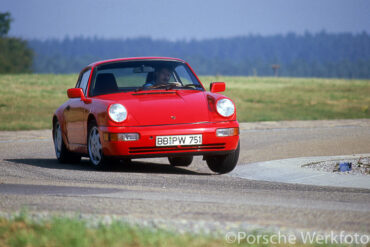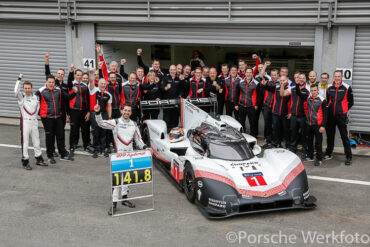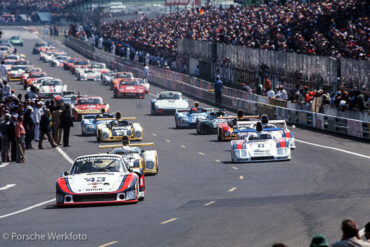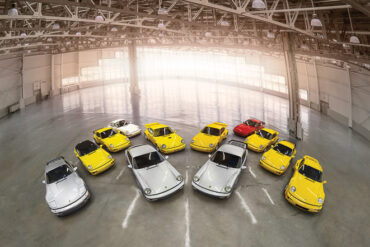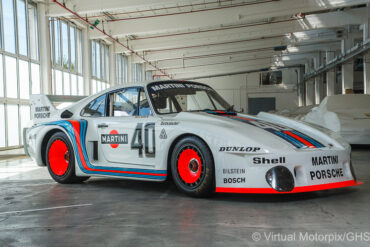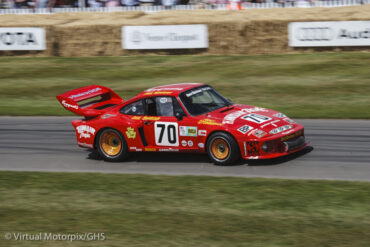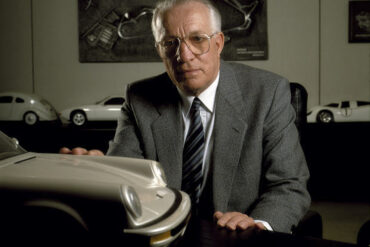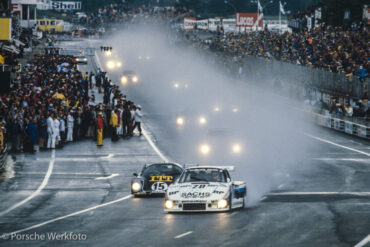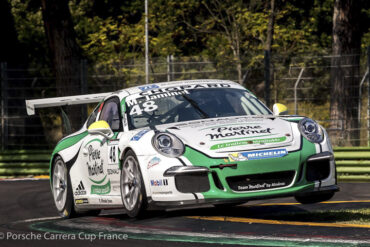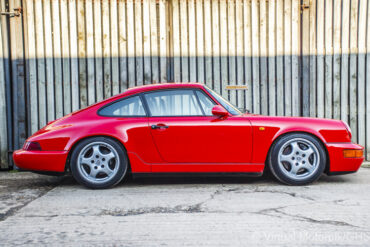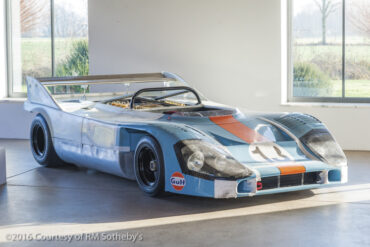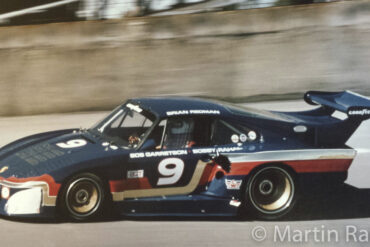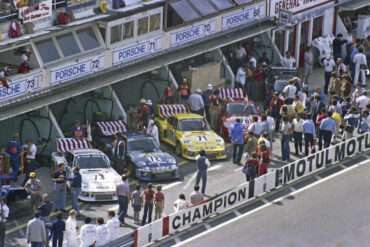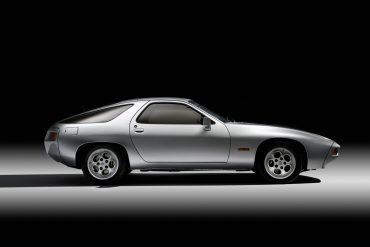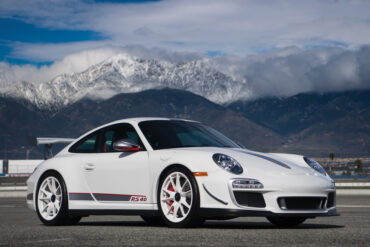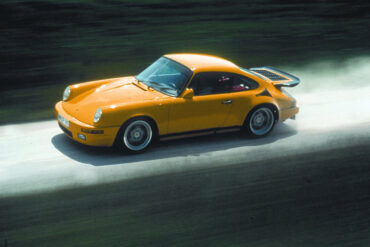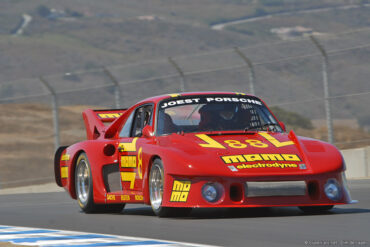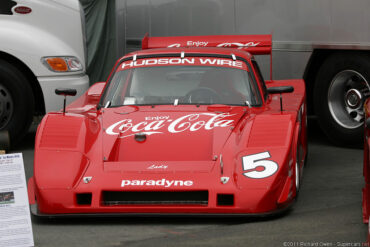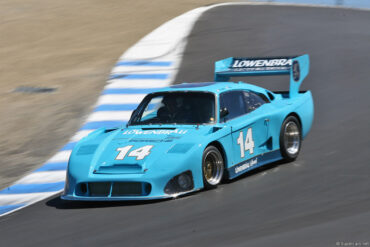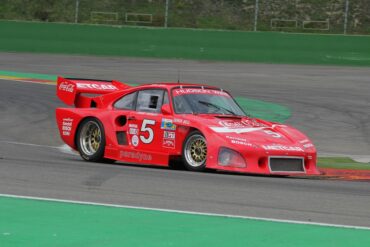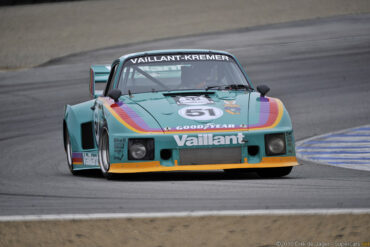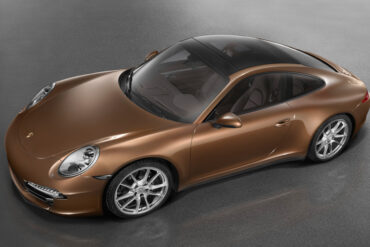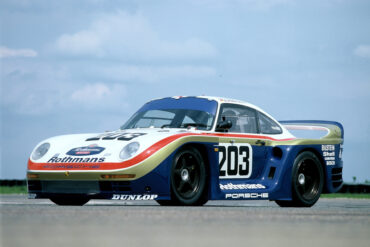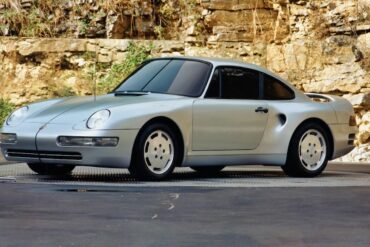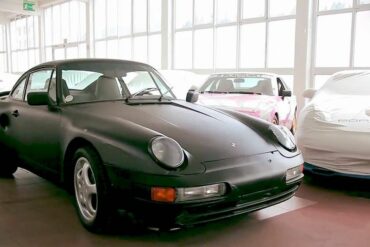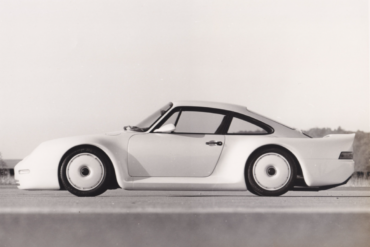Type 964 family line-up in 1990 showing the Carrera 4 range: (from front to back) Cabriolet, Targa and Coupé From...
326 results for
930 Turbo
Le Mans 24 Hour, 10/11 June 1978: The Porsche 935/78 ‘Moby Dick’ pulls away at the start of the race...
RM Sotheby’s Amelia Island auction sale – Porsche 964 Collection Now in its 20th year, RM’s 2018 Amelia Island sale...
The 1977 #40 Martini Porsche 935/2.0 Baby (chassis #935 2 001) photographed at the Porsche Museum, Stuttgart, Germany in May...
Porsche 935 chassis no. 009 00030, the Old Warhorse speeds up the hill at the 2015 Goodwood Festival of Speed...
The inspired engineer behind so much of Porsche’s success, Helmuth Bott has long remained the company’s eminence grise, but little...
Chassis #000 00023 gets a check out on the autobahn by the Kremer brothers prior to Le Mans. Manfred Kremer...
Philippe Alméras is the owner of Team Martinet by Alméras, one of the main Porsche team contenders in the 2017...
Porsche 964 Carrera RS 3.6-litre (1992), January 2017 Porsche’s popular 911 model range has evolved hugely over the years, but...
1970 Porsche 917/10 prototype chassis #917/10-001 as offered for sale on 8 February 2017 Mention the name Porsche and motor...
Porsche’s 1981 Daytona 24-Hour winning poster A lot of people have asked me over the years, what is it like...
All four of the Dick Barbour Racing Porsche 935s line up in the pits ahead of the 1979 Le Mans...
The Porsche 928 was the company’s first production car with a V-8 engine and the only coupe powered by a front-mounted V-8 as of today. Developed in the 1970s as a replacement of the 911, the 928 was eventually sold alongside the rear-engine sports car. Production lasted from 1977 until 1995. What people saw was a sleek if rather heavy-looking 2 + 2 hatchback coupe unlike anything else on the road -- a sort of German Corvette.
This is the best 911 Porsche has ever made. The headline power figure and the ability to rev to 8,500 snare your attention, but the most staggering aspect of this engine is actually its tractability. Mid-range lunge is marvelous, even if the peak number of 339 pound-feet doesn't sound huge in the context of short gear ratios, lightweight, and a compact frontal area. In third gear, the way this thing flies between 4,500 and 8,500 rpm is scintillating. Plus, the utter progression of the delivery makes it vastly easier to take advantage of compared to the GT2's ridiculous turbo surge. This is one special car.
1987 Ruf CTR Yellow Bird The Ruf Yellow Bird is one of the most prolific tuned vehicles and gained notoriety...
Inspired by the Kremer brothers, Joest built their own version of the 935 for the 1979 season. Like the factory cars it featured intakes in the C-pillars and also had a slightly different front profile. One car was campaigned by Liqui Moly Joest Racing and won the 1980 Daytona 24 Hours outright as driven by Reinhold Jöst, Rolf Stommelen and Volkert Merl. A second car was built up for Electrodyne and raced with Momo livery in the USA.
In 1982 Bob Akin Motor Racing commissioned spectacular Porsche 935 to be built for their Le Mans effort. It was built by Chuck Gaa of Gaaco to have a higher topspeed and increased performance. Chuck Gaa fitted a Lola T600 front end to a new bespoke bonded aluminum chassis. According to the regulations, the body retained the 930 roof structure, but was entirely new from the beltline down. The standard 3.2-liter Porsche engine was used and put out 750 bhp.
Using factory 935/78 ‘Moby Dick’ plans, Kremer built their own version. In doing so they modified the body to their own design to include more downforce. Only two cars were built in K4 specification. Bob Wollek drove the first car to win the Porsche Cup in 1981. Later this car was sold to John Fitzpatrick Racing and driven by John Fitzpatrick and David Hobbs to many successes in the IMSA series.
In 1977 Kremer sufficiently improved the 935 to begin series production of their own version. It was the third Kremer built on Porsche's successful platform and many 935/934s were updated to reflect ideas from the brothers in Cologne. The K3 version of their 935 was a great success and won the 1979 24 Hours of Le Mans, 1980 Sebring 12 Hours outright.
Upon seeing the factory 935s and what was possible using the 930 platform, the Kremer bothers from Cologne built up their own version. Their first car contested the World Championship of Makes in 1976 and in the following year, an updated version known as the K2 was further modified. Compared to the Porsche 935, the Kremer version was much more slab sided and featured fences along the top of the rear fender to direct air to the rear wing.
The 2013 Porsche Carrera 4 featured a 3.4-liter flat-six engine. It was mated as standard to a world's first seven-speed manual transmission. An automatic, PDK (dual-clutch) transmission was offered as an option. The Carrera 4 featured an all-wheel-drive torque distribution in the instrument cluster display. The most distinctive identifying feature of the 911 with all-wheel drive is still the wide rear section: compared to the two-wheel drive 911 Carrera models, the rear wheel housings 22 mm wider, and each of the rear tires is 10 mm wider.
The Porsche 961 was the racing version of the 959 supercar. While the 959 rallye car was also internally called 961, publicly only the circuit racer was called 961. Only one 961 was built. It had 959 prototype chassis number which in turn was from the 1985 911 Turbo chassis number sequence: WP0ZZZ93ZFS010016. The 961 was entered at the 1986 Le Mans 24 hour race. Uncommonly, the 24 hour race was scheduled for May 31-June 1 that year, two weeks earlier of the typical Le Mans weekend in the middle of June.
In 1988, Porsche produced a two-door called the 969, based upon the bodystyling of the 911. Intended as the successor to the Porsche 930, the car did not get past the prototype stage. Porsche intended to create a more powerful, range topping model, based loosely upon the 911. The 969 was to feature a hugely powerful twin-turbocharged engine, and was to pick up where the Porsche 959 left off, using much of the supercar's technology.
The Porsche 965 was an engineering mule, used to try and solve the tough problem of how to replace the 930's turbocharged, air-cooled engine to power a new sub-959, range-topping 911. Costs ballooned, the project floundered, and ultimately in its last throes, its engineers got desperate. The flat-six with water-cooled heads was too complex, and too expensive, to work. A water-cooled Audi V8 was tested out back, a last-ditch effort to find a cost-effective, power-dense solution.
The idea for 959 was born as early as 1983 when this so-called Guppe B prototype was displayed at Frankfurt Motor Show. While there were glimpses of the contemporary 911 in the Gruppe B – the wheelbase, the roofline, the windows and doors, much of the interior – in truth the new model had little in common with Porsche’s perennial sports car. The production 959 ended up being launched in 1987.
No More Content


